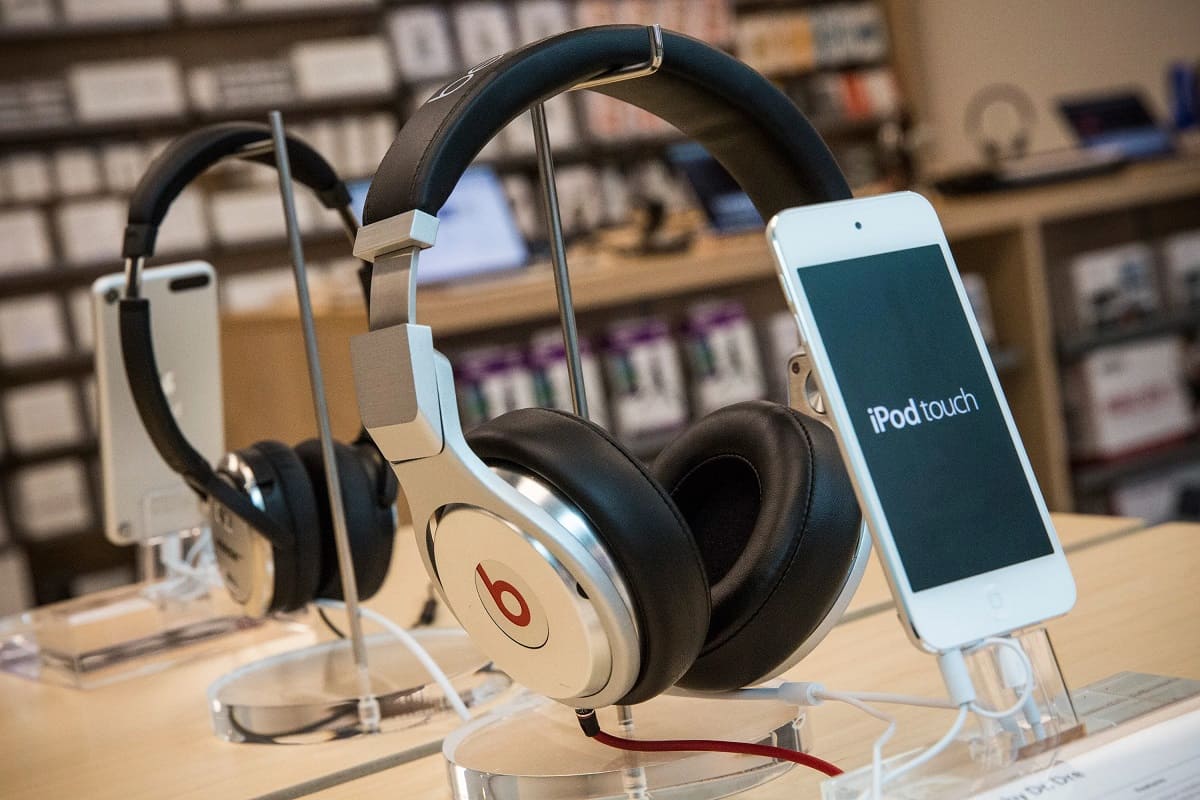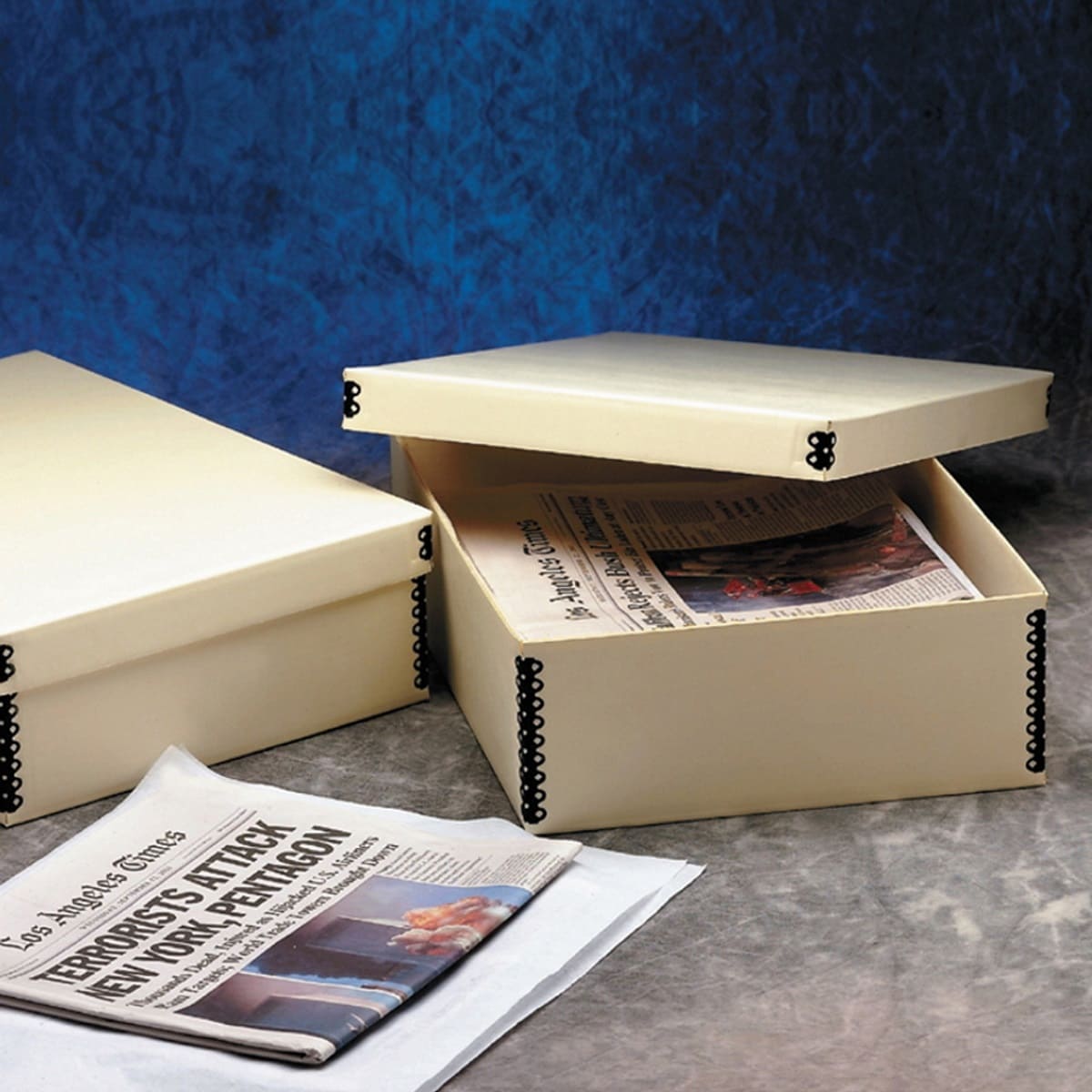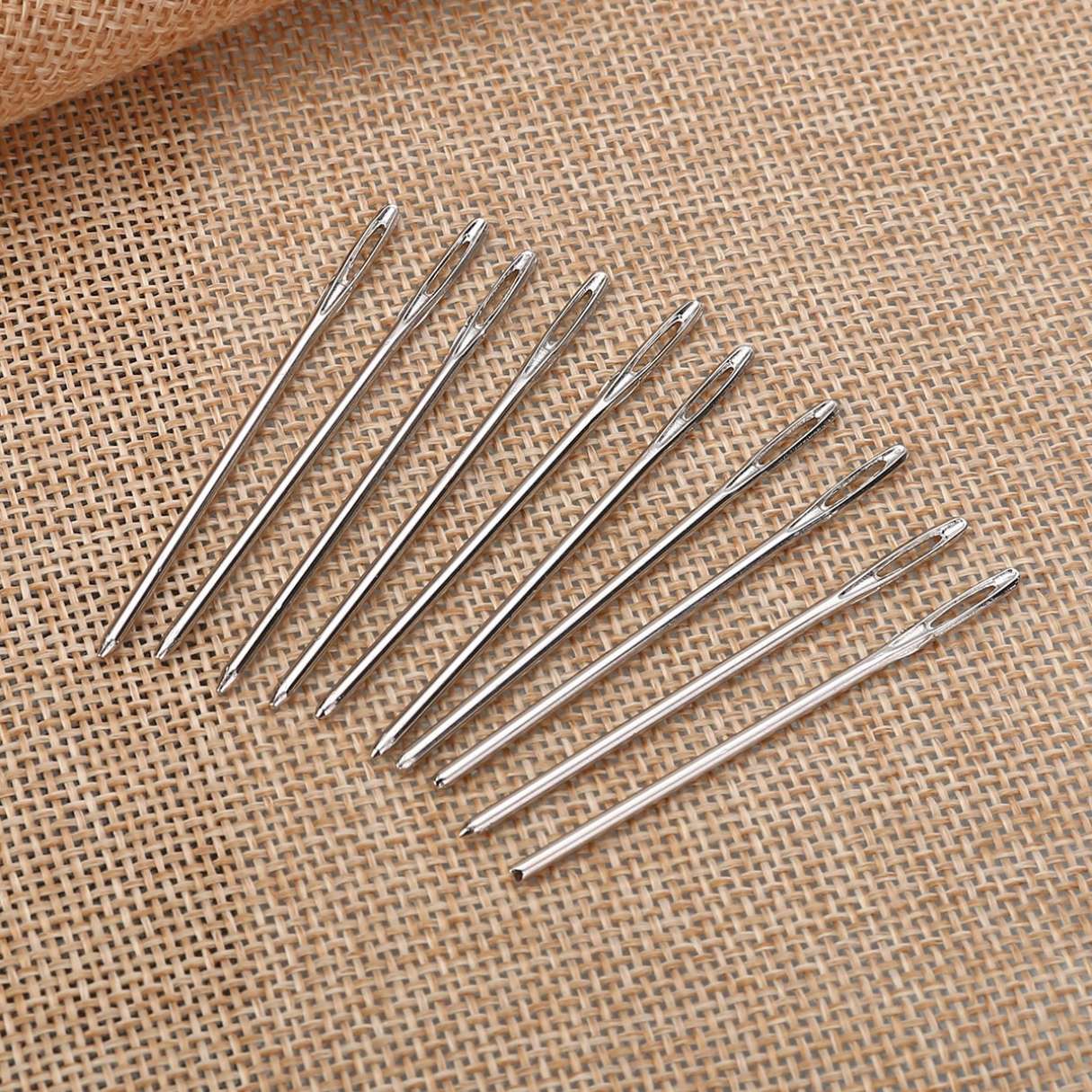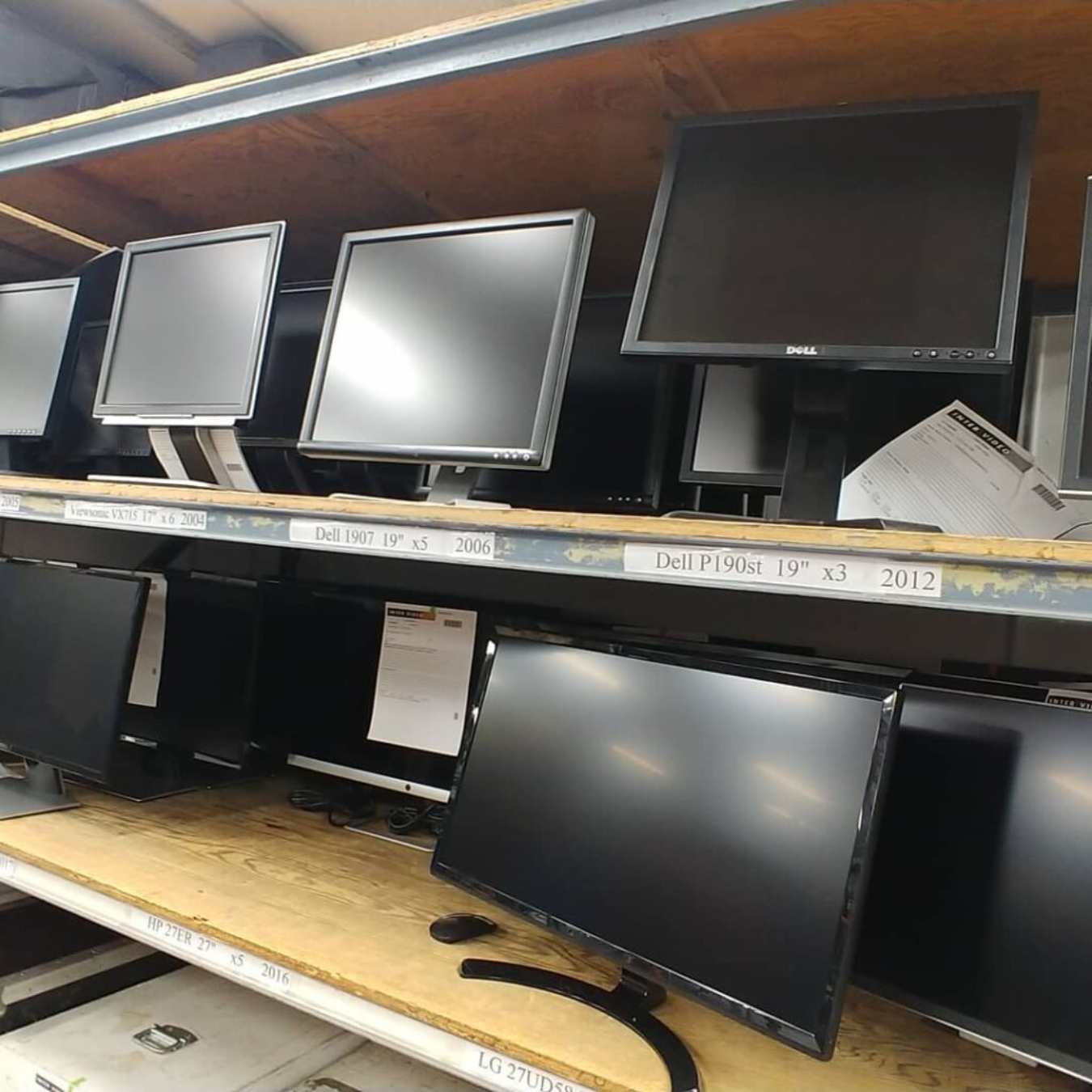

Articles
How To Store Beats
Modified: January 7, 2024
Discover effective strategies for storing your beats in this informative collection of articles. Avoid losing your hard work and keep your beats organized and easily accessible.
(Many of the links in this article redirect to a specific reviewed product. Your purchase of these products through affiliate links helps to generate commission for Storables.com, at no extra cost. Learn more)
Introduction
As a music producer or beatmaker, your beats are your most valuable asset. They represent hours of hard work, creativity, and emotion. But if they are not stored properly, they can be at risk of being lost or damaged. That’s why it is crucial to have a solid beat storage system in place.
In this article, we will guide you through the process of storing your beats effectively. We will cover topics such as organizing your beats, choosing the right storage solution, preparing your beats for storage, and protecting them from data loss. By implementing these strategies, you can ensure the long-term preservation and accessibility of your beats.
So, whether you’re just starting out or have an extensive library of beats, read on to discover the best practices for storing your beats securely.
Key Takeaways:
- Proper beat storage is essential for music producers and beatmakers to ensure organization, accessibility, and longevity of their valuable work. Implementing effective storage practices is crucial for protecting beats from data loss and ensuring easy access to music creations.
- Organizing beats with consistent naming conventions, choosing the right storage solutions, preparing beats for storage, and implementing a robust backup strategy are key aspects of effective beat storage. These practices safeguard music creations and provide peace of mind for music producers and beatmakers.
Read more: How To Beat The Ring Toss
Understanding the Importance of Proper Beat Storage
Proper beat storage is essential for several reasons. Firstly, it allows you to keep your beats organized and easily accessible. When you have a large collection of beats, finding the right one for a project can be a daunting task. By keeping your beats stored in a systematic manner, you can save time and avoid frustration.
Secondly, proper beat storage helps to maintain the quality of your beats. Beats are digital files, and just like any other digital content, they can be susceptible to corruption, loss, or damage. Storing your beats in a secure and stable environment minimizes the risk of file corruption and ensures that they remain in pristine condition.
Furthermore, proper storage is crucial for collaboration. If you work with other artists, producers, or engineers, being able to share your beats easily is essential. Having a reliable storage system in place allows you to send beats to collaborators without any hassle, ensuring a smooth workflow and maintaining strong professional relationships.
Lastly, proper beat storage provides peace of mind. Knowing that your beats are safely backed up and protected from potential disasters such as hard drive failure or accidental deletion gives you the confidence to focus on your creative process. It eliminates the fear of losing countless hours of hard work and allows you to work with a sense of security.
Overall, the importance of proper beat storage cannot be overstated. It ensures organization, preserves quality, facilitates collaboration, and provides peace of mind. With this understanding, let’s now delve into the strategies and best practices for effective beat storage.
Organizing Your Beats
One of the key components of proper beat storage is organizing your beats in a systematic and logical manner. This not only allows for easy access but also makes it simpler to manage and locate specific beats when needed. Here are some tips for organizing your beats effectively:
- Use consistent naming conventions: Develop a standardized naming convention for your beats. Include relevant information such as the date created, genre, and any other details that are important to you. This will make it easier to search for specific beats based on specific criteria.
- Create folders and subfolders: Use a folder structure that makes sense to you. Consider organizing your beats by genre, artist, or project. Within each main folder, create subfolders to further categorize your beats. For example, within a “Hip-Hop” folder, you can have subfolders for “Instrumentals,” “Trap Beats,” and so on.
- Utilize metadata tags: Take advantage of metadata tags to add additional information to your beats and make them searchable. Include tags for tempo, key, mood, and any other relevant descriptors. This will allow you to filter and sort your beats based on these criteria, making it easier to find the right beat for a specific project.
- Create a master database: Consider maintaining a separate master database or spreadsheet where you list all your beats along with relevant details. This can serve as a quick reference guide, especially when your beat library becomes extensive. Include information such as the beat name, file location, date created, and any additional notes you want to add.
- Regularly clean up and organize: Set aside time periodically to review your beat library and eliminate any duplicates, outdated files, or beats that no longer meet your standards. This will help keep your library lean and organized, ensuring that you can easily find the beats you actually want to use.
By implementing these strategies for organizing your beats, you can maximize efficiency and streamline your workflow. Additionally, it will make it easier to collaborate with others, as you can quickly locate and share specific beats based on the necessary criteria.
Choosing the Right Storage Solution
When it comes to storing your beats, choosing the right storage solution is crucial for ensuring the security, accessibility, and longevity of your files. Here are some factors to consider when selecting a storage solution:
- Cloud storage: Cloud storage services, such as Google Drive, Dropbox, and OneDrive, offer convenient and reliable storage options. They allow you to access your beats from anywhere with an internet connection and provide automatic backups. However, keep in mind that there may be storage limitations based on the service provider or pricing plans. Additionally, make sure to choose a reputable and secure cloud storage provider to protect your beats.
- External hard drives: External hard drives are a popular choice for beat storage due to their large storage capacities and portability. They allow you to keep your beats in physical form and can be easily connected to different devices. Consider investing in a reliable external hard drive with ample storage space to accommodate your growing beat library. It is recommended to choose a drive with USB 3.0 or higher for faster data transfer.
- NAS (Network Attached Storage) devices: NAS devices are similar to external hard drives but are designed to be connected to your local network. They offer centralized storage that can be accessed by multiple devices within the same network. NAS devices provide a scalable storage solution and can be expanded by adding additional hard drives. They are suitable for individuals or studios with larger beat collections or collaborative projects.
- RAID configurations: RAID (Redundant Array of Independent Disks) configurations can provide an extra layer of data security by utilizing multiple hard drives in various setups. RAID 1 is a popular configuration that mirrors data across two drives, providing redundancy in case one drive fails. RAID 5 uses striping with distributed parity across multiple drives for enhanced performance and fault tolerance. Consider implementing RAID configurations if you have critical beats that require high levels of protection.
- Hybrid storage solutions: For maximum security and accessibility, you can opt for hybrid storage solutions that combine the advantages of both cloud storage and local storage. This involves using cloud services as your primary storage while maintaining local copies on external hard drives or NAS devices. This approach offers the benefits of remote access and backup of cloud storage while having physical copies in case of network connectivity issues or service provider limitations.
Ultimately, the right storage solution for your beats depends on factors such as the size of your beat library, your budget, and your specific needs. It is recommended to have multiple backups in different storage solutions to minimize the risk of data loss. Additionally, periodically review and test your storage solution to ensure its reliability and integrity.
Preparing Your Beats for Storage
Before you store your beats, it’s important to take certain steps to ensure that they are ready for storage and protected from potential issues. Here are some essential preparations to consider:
- Organize and clean up: As mentioned earlier, organizing your beats is crucial. Take the time to clean up your beat library, remove any unnecessary files or duplicates, and ensure that your beats are properly labeled and categorized. This will make it easier to manage and locate your beats in the future.
- File formats and quality: Ensure that your beats are stored in high-quality file formats, preferably lossless formats like WAV or FLAC. These formats retain the original audio quality, ensuring that your beats sound their best even after storage. Avoid using compressed file formats like MP3, as they can compromise the audio quality.
- Backup your DAW project files: If you use a Digital Audio Workstation (DAW) to create your beats, make sure to back up your project files along with the audio stems. This will allow you to easily access and modify your beats in the future if needed. Store these project files in a separate location from your main beat storage for added security.
- Add metadata and tags: Include relevant metadata and tags to your beats to provide additional information and make them searchable. This can include details such as bpm, key, genre, and any other relevant descriptors. Adding metadata will make it easier to filter and locate specific beats later on.
- Consider file compression: If you have limited storage space, you can consider compressing your beat files using lossless compression algorithms like ZIP or RAR. This will reduce the file sizes without compromising audio quality. However, keep in mind that you will need to decompress the files before using them.
- Protect against viruses and malware: Scan your beat files using reliable antivirus software before storing them. This will help prevent any potential viruses or malware from infecting your files and causing data loss or corruption.
By following these preparations, you can ensure that your beats are properly organized, labeled, and protected before being stored. This will make it easier to manage and access your beats in the future and provide peace of mind knowing that your valuable music creations are safe and ready for storage.
Read more: How To Beat Cookie Dough Without A Mixer
Storing Beats in a Digital Format
Storing beats in a digital format is the most common and convenient method for music producers and beatmakers. It allows for easy access, portability, and efficient organization. Here are some important considerations when storing your beats digitally:
- Choose a dedicated folder: Create a dedicated folder on your computer or external storage device specifically for storing your beats. This will help keep your beats organized and separate from other files.
- Use consistent file naming: Develop a consistent file naming convention for your beats. Use descriptive names that include relevant information such as the beat name, date created, and any other details you deem important. This will make it easier to search and locate specific beats in the future.
- Consider using subfolders: To further organize your beats, consider creating subfolders within your main beat storage folder. You can categorize them by genre, artist, BPM, or any other criteria that make sense for your collection.
- Backup your beats: Regularly create backups of your beat files to prevent data loss. You can use external hard drives, cloud storage services, or a combination of both for added security.
- Cloud storage services: Take advantage of cloud storage services like Google Drive, Dropbox, or OneDrive to store your beats. These services provide easy access from any device with an internet connection and offer automated backups.
- External hard drives: Consider using external hard drives as your primary storage solution or as a backup method. Invest in high-quality drives with sufficient storage space to accommodate your beat library.
- Label and tag your beats: Add metadata and tags to your beat files to make them easily searchable. Include information such as genre, BPM, key, and any other relevant descriptors. This will save you time when searching for specific beats.
- Use reliable storage devices: Ensure that the devices you use for storing your beat files are reliable and in good working condition. Check for any signs of damage or malfunctions, and repair or replace them as necessary to prevent data loss.
By following these best practices, you can effectively store your beats in a digital format, making it easier to manage, access, and protect your music creations. Remember to regularly back up your files and maintain an organized file structure to ensure the longevity and security of your beats.
When storing beats, make sure to keep them in a cool, dry place to prevent moisture damage. Consider using airtight containers or bags to protect them from dust and debris.
Storing Beats on External Hard Drives
External hard drives are an excellent option for storing your beats. They offer large storage capacities, portability, and the ability to keep your beats separate from your computer’s internal storage. Here are some important considerations when storing your beats on external hard drives:
- Choose the right external hard drive: Select a reliable and high-quality external hard drive with ample storage capacity to accommodate your beat library. Consider factors such as the connection type (USB 3.0, USB-C, Thunderbolt), transfer speed, and durability.
- Format your external hard drive: Before using your external hard drive for beat storage, format it to ensure compatibility with your operating system. You can choose the appropriate file system (such as NTFS for Windows or HFS+ for macOS) and allocate the desired storage space.
- Create a dedicated folder structure: Similar to storing beats in a digital format, create a dedicated folder on your external hard drive specifically for your beats. Organize your beats into subfolders based on genres, artists, projects, or any other sorting criteria that make sense for your workflow.
- Backup your external hard drive: As with any storage device, it is crucial to regularly back up your external hard drive to avoid potential data loss. Consider creating additional copies of your beat files on other storage devices, such as cloud storage or secondary external hard drives.
- Label and catalog your beats: To easily find and identify specific beats on your external hard drive, add clear labels and catalog your beats using a separate spreadsheet or beat management software. Include details such as beat names, genres, key signatures, and any additional notes that can assist in searching and organization.
- Protect your external hard drive: To ensure the longevity and safety of your beat files, handle your external hard drive with care. Protect it from physical damage, excessive heat, moisture, and extreme temperatures.
- Regularly test your external hard drive: Periodically check the health of your external hard drive by running diagnostic tests. Use software designed to detect any potential issues, such as bad sectors or corrupted files. If any problems are detected, take appropriate steps to repair or replace the external hard drive to prevent data loss.
- Keep firmware and software up to date: Stay updated with the latest firmware and software updates for your external hard drive. Manufacturers often release updates that improve compatibility, performance, and security.
By utilizing external hard drives for beat storage, you can enjoy the benefits of large storage capacity, easy portability, and the ability to keep your beats separate from your computer’s internal storage. Remember to organize your beats, backup your external hard drive, and take necessary precautions to ensure the safety and longevity of your beat files.
Backing Up Your Beats
Backing up your beats is a crucial step in ensuring the safety and availability of your music creations. By creating backups, you can protect against data loss due to hardware failure, accidental deletion, viruses, or other unforeseen events. Here are essential tips for backing up your beats:
- Implement multiple backup methods: Relying on a single backup method can leave you vulnerable to potential loss. It is recommended to have multiple backups in different storage locations for extra protection. This can include cloud storage, external hard drives, network-attached storage (NAS), or even physical copies on DVDs or Blu-ray discs.
- Automate your backups: Manually creating backups can be time-consuming and easily neglected. Take advantage of backup software or built-in operating system tools to automate the backup process. Schedule regular automatic backups to ensure that your beat files are consistently protected without requiring manual intervention.
- Cloud storage backup: Utilize cloud storage services to create a secure offsite backup of your beats. Cloud storage providers like Google Drive, Dropbox, and OneDrive offer reliable infrastructure and automatic syncing. This allows you to access your beats from any device and provides an additional layer of protection against physical damage or loss of local backups.
- External hard drive backup: External hard drives are an excellent choice for local backups. Regularly create backups of your beat files onto external hard drives and store them in a safe location. Ensure that the external hard drives are kept in good condition and periodically test them to verify the integrity of the backup data.
- Version control: Consider using version control systems or software to keep track of changes made to your beat files. This allows you to revert to previous versions if needed and provides an extra layer of backup protection.
- Test your backups: Creating backups is not enough; you should also regularly test your backups to ensure their reliability. Periodically restore a sample of your beat files from your backups and verify that they are intact and playable. This helps uncover any potential issues early on and ensures that your backups are ready when needed.
- Offsite backup: Keep at least one backup copy of your beats in an offsite location. This can be done by storing an external hard drive or using cloud storage services. Offsite backups protect against theft, fire, natural disasters, or any event that could affect your local backups.
- Document your backup strategy: Maintain documentation of your backup strategy, including the locations of your backups, the frequency of backups, and any specific procedures or software used. This documentation will be helpful in case of emergencies or when you need to recreate your backup system.
By implementing a robust backup strategy and regularly backing up your beats, you can minimize the risk of data loss and ensure the availability of your music creations. Remember to automate your backups, use multiple backup methods, and regularly test your backups to maintain the integrity and security of your beat files.
Protecting Your Beats from Data Loss
Data loss can be devastating for music producers and beatmakers, as it can result in the loss of countless hours of creative work. To safeguard your beats and prevent data loss, it is essential to take proactive measures. Here are some tips to protect your beats from data loss:
- Use reliable storage devices: Invest in high-quality storage devices, whether it’s hard drives, solid-state drives (SSDs), or cloud storage. Choose reputable brands with a track record of reliability to minimize the risk of hardware failure.
- Keep your storage devices in a safe environment: Protect your storage devices from physical damage by keeping them in a cool, dry, and dust-free environment. Avoid exposing them to extreme temperatures, moisture, or magnetic fields that can adversely affect performance or cause data loss.
- Regularly update your software and operating systems: Software updates often include important bug fixes and security patches. Keep your operating system, backup software, and antivirus software up to date to protect against vulnerabilities and potential data loss risks.
- Scan your beats for viruses and malware: Regularly scan your beats using reliable antivirus and malware detection software to prevent potential data corruption or loss resulting from virus infections. Quarantine or remove any threats detected to ensure the integrity of your beats.
- Protect against power surges and outages: Uninterruptible Power Supply (UPS) devices can protect your equipment from sudden power outages and voltage fluctuations. They provide temporary power during outages and stabilize electrical current, preventing damage or data loss caused by power surges.
- Implement a surge protector: Use surge protectors to safeguard against power surges that can damage or corrupt your storage devices. Plug your devices into surge protectors to ensure they are shielded from the potential dangers of electrical fluctuations.
- Regularly run disk checks and maintenance: Use disk-checking utilities to examine and repair any potential errors on your storage devices. These tools can scan for bad sectors, file system errors, and other issues that could lead to data loss. Perform maintenance tasks, such as disk defragmentation, to optimize disk performance.
- Secure your beats with encryption: Consider encrypting your beat files to add an extra layer of security. Encryption ensures that only authorized parties can access and decode your beats, protecting them from unauthorized access or theft. Use reliable encryption software or built-in operating system encryption features to encrypt your beat files.
- Educate yourself on data recovery: While prevention is essential, data loss can still occur despite your best efforts. Familiarize yourself with data recovery techniques or consult professionals who specialize in data recovery. Knowing how to recover lost data can increase your chances of retrieving your beats in the event of accidental deletion or hardware failure.
By implementing these strategies, you can significantly reduce the risk of data loss and ensure the safety and availability of your valuable beat files. Protecting your beats requires a proactive and multi-layered approach, combining reliable hardware, up-to-date software, proper precautions, and regular maintenance.
Read also: 10 Best Beats Boombox Speaker For 2024
Labeling and Cataloging Your Beats
Labeling and cataloging your beats is an essential step to ensure efficient organization, easy searchability, and quick access to your music creations. By implementing a proper labeling and cataloging system, you can save valuable time and effort when searching for specific beats. Here’s how to effectively label and catalog your beats:
- Consistent naming conventions: Develop a consistent naming convention for your beats to maintain organization and clarity. Include relevant information such as the beat name, date created, and any other details that are important to you. This will make it easier to search and identify specific beats within your collection.
- Use metadata tags: Take advantage of metadata tags to provide additional information about your beats. Include details such as genre, mood, key, tempo, and any other descriptors that are relevant to your music. Metadata tags allow for easy filtering and sorting, helping you quickly find the beats that match specific criteria.
- Create a beat catalog: Maintain a catalog or spreadsheet that lists all your beats along with their respective details. Include columns for the beat name, file location, date created, genre, tempo, and any other relevant information you want to track. This catalog serves as a centralized reference point and makes it easy to browse or search for specific beats.
- Organize beats into folders: Create folders on your computer or external storage device to categorize your beats. Depending on your preference, you can organize them by genre, artist, project, or any other classification that makes sense to you. Within each folder, use consistent naming conventions to further organize beats.
- Add artwork or visual cues: Consider adding visual artwork or cues to your beat files to enhance their identification and make them visually appealing. This can be in the form of album covers or custom images specific to each beat. Associating visual elements with your beats provides a quick visual reference when browsing through your collection.
- Utilize beat management software: Use specialized beat management software or digital audio workstation (DAW) plugins to assist in labeling, cataloging, and organizing your beats. These tools often provide robust tagging and searching capabilities, allowing for seamless management of your beat collection.
- Regularly review and update: Set aside time periodically to review and update your beat labels and catalog. Remove any duplicates, update metadata, and ensure that the beat information is accurate and up to date. This maintenance process will help keep your beat collection organized and easily navigable.
- Backup your beat catalog: Treat your beat catalog as a valuable asset and make sure to regularly back it up. Include the catalog file in your backup routine and keep backups in separate locations for extra security.
By implementing a robust labeling and cataloging system, you can efficiently organize and access your beat collection. Whether you choose to manually label your beats or utilize specialized software, the key is to maintain consistency, accuracy, and regular updates. With a well-organized and properly labeled beat library, you can easily navigate through your collection and find the perfect beats for your projects.
Maintaining a Backup Schedule
Maintaining a backup schedule is crucial for ensuring the continuous protection of your beats against data loss. Having a regular and consistent backup routine minimizes the risk of losing your music creations and allows for quick recovery in case of any issues. Here are some essential tips for maintaining an effective backup schedule:
- Establish a backup frequency: Determine how often you need to back up your beats based on the frequency of updates or additions to your collection. For some, a weekly backup may suffice, while others may require daily or even real-time backups. Assess your workflow, the importance of the beats, and the amount of new content created to determine the appropriate backup frequency.
- Automate your backups: Take advantage of backup software or built-in operating system tools to automate the backup process. This ensures that backups are performed consistently and reduces the risk of human error or forgetfulness. Set up automated backup schedules based on your desired frequency to streamline the process.
- Use different backup methods: Avoid relying solely on a single backup method. Employ multiple backup methods, such as cloud storage, external hard drives, or network-attached storage (NAS), to diversify your backup strategy. This provides redundancy and ensures that your beats are protected even if one backup method fails.
- Perform regular backups: Stick to your backup schedule and make it a routine. Consistently perform backups at the scheduled frequency, whether it’s daily, weekly, or monthly. Regular backups ensure that your beats are continuously protected and up to date.
- Monitor backup success: Regularly check the status of your backups to ensure they are running successfully. Verify that the backup files are being created and stored properly in their designated locations. Regular monitoring helps catch any potential issues or errors early on and allows for prompt corrective action.
- Test your backups: Don’t assume that your backups are reliable without testing them. Periodically restore a sample of your beats from your backups and verify their integrity and usability. Testing your backups ensures that the backup process is functioning correctly and that your beats can be successfully recovered when needed.
- Update your backup media: Over time, storage media can degrade or become obsolete. Regularly evaluate and upgrade your backup storage devices, such as external hard drives or cloud storage plans, to ensure they are reliable and provide sufficient storage capacity for your beat library.
- Adapt your backup strategy based on changing needs: As your beat library grows or your workflow evolves, reassess your backup strategy. Adjust your backup schedule, backup methods, or storage capacities to accommodate any changes and ensure the continued effectiveness of your backup routine.
By maintaining a backup schedule and following these tips, you can ensure the ongoing protection and availability of your beats. Consistent and regular backups are essential to safeguard your music creations and provide peace of mind, knowing that your beats are protected against data loss.
Conclusion
Proper beat storage is vital for music producers and beatmakers to protect their valuable and creative work. By implementing effective storage practices, you can ensure the organization, accessibility, and longevity of your beats. Throughout this article, we have discussed several key aspects of beat storage, including organizing your beats, choosing the right storage solutions, preparing your beats for storage, and protecting them from data loss.
Organizing your beats with consistent naming conventions, folder structures, and metadata tags allows for quick and efficient searching. Choosing the right storage solution, whether it’s cloud storage, external hard drives, or network-attached storage (NAS), ensures that your beats are secure and easily accessible. Preparing your beats for storage involves organizing, cleaning up, and selecting appropriate file formats.
To protect your beats from data loss, it is important to implement a backup strategy. This includes creating backups using multiple methods such as cloud storage and external hard drives, automating backups, and testing their reliability. Additionally, implementing measures to prevent data loss, such as using reliable storage devices, protecting against power surges and malware, and keeping software and firmware up to date, is essential.
Labeling and cataloging your beats provides efficient organization and easy searchability, saving time and effort when locating specific beats. Lastly, maintaining a backup schedule ensures that your beats are consistently protected and up to date, reducing the risk of data loss.
In conclusion, taking the time to store your beats properly and implementing a solid beat storage system is crucial for music producers and beatmakers. By following the best practices outlined in this article, you can protect your beats from data loss, have easy access to your music creations, and work with confidence knowing that your valuable beats are secure.
Frequently Asked Questions about How To Store Beats
Was this page helpful?
At Storables.com, we guarantee accurate and reliable information. Our content, validated by Expert Board Contributors, is crafted following stringent Editorial Policies. We're committed to providing you with well-researched, expert-backed insights for all your informational needs.














0 thoughts on “How To Store Beats”